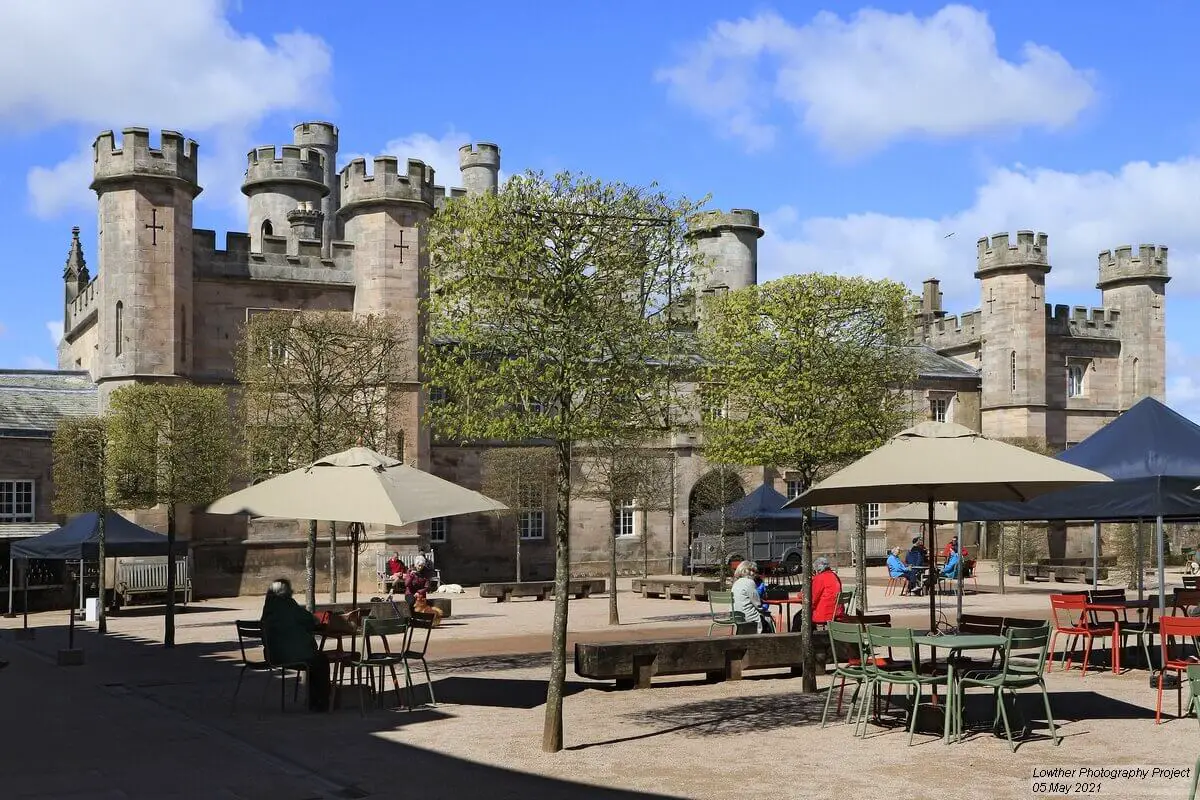Lowther Castle and Gardens
Lowther Castle & Gardens opened its gates to the public as a visitor attraction in 2012. The opening came as the culmination of many years of work, consultations, fund-raising, grounds clearance and detailed building restoration. 1953 the castle had been de-roofed and its extensive gardens turned over firstly to commercial tree-planting and animal-rearing. Later they were abandoned entirely and Nature took over.

The Lowther Family
Lowther Estate has been the seat of the Lowther family since the 11th century and possibly earlier. Rights to own the estate and hunt the land were granted to the Lowthers during the reign of Edward I.

Lowther Castle itself was commissioned by the Earl of Lonsdale in 1806 from the architect Robert Smirke. Smirke was young at the time, just 25. He threw himself into the project and the castle was completed in around 1812, early and at half the projected cost.
Over the proceeding century, Lowther Castle was host to the great and the good of the kingdom. Thanks to generous revenues from land, forestry and coal, art collections were built up and by the time the fifth Earl of Lonsdale – Hugh Cecil Lowther (the ‘Yellow Earl’) – came to inherit, Lowther enjoyed a splendid reputation not just in England but beyond.

The Yellow Earl at Lowther Castle
Hugh Cecil was a lavish host, an aficionado of the very finest things in life and did nothing by halves. His horses, his racehorses, his dogs, his private orchestra, his staff, his guests – they were all treated to the most elaborate and expensive of arrangements. The private orchestra had its own train carriage when they travelled. So did the Yellow Earl’s dogs.
For fifty or so years, the Yellow Earl remained in charge of both Lowther Castle and estates in Whitehaven and Rutland – but in 1936, his trustees lost patience. Most of the money had gone and the Castle was closed for good. During the 2nd World War, the castle was home to a number of tank regiments – and an experiment to create a new tank weapon, the Canal Defence Light, was conducted across the estate.

By 1953 the castle was very dilapidated. The gardens were covered in concrete left by the army. James Lonsdale, the 7th Earl, decided to remove the roof and allow the house to decay. Spruce were planted across the gardens and pigs and chickens were reared commercially in sheds on the south lawns.
Lowther Castle and Gardens Today
The Lowther Castle & Gardens that visitors see today is a popular and much-loved attraction. The gardens have been uncovered and added to. Dan Pearson, the international garden designer, has brought new life and new stories to the ruins, the Parterre, the Courtyard and the Rose Garden.
A permanent historical exhibition – complete with stuffed husky, coachmen’s uniforms and imagined dining-room display – tells the Story of Lowther. In the deep of the gardens lies one of the country’s largest adventure playgrounds – appropriately enough, it is called the lost castle

A public road passes through the estate from Askham to Lowther Newtown, passing St Michael’s Church which is opposite the front of Lowther Castle. Inside the Church are various memorials to members of the Lowther family.
Sir Robert Smirke also designed St Peter’s Church in nearby Askham.
See the foot of the page, below the map, for archived photos of Lowther Castle and Gardens during restoration works.
Related Links
Menu :
Grid Ref : NY 523239
Why not treat yourself to a short break in the beautiful countryside around Lowther Castle? Enter your dates below to see available accommodation nearby.
Archived photos of Lowther Castle and Gardens
[nggallery id=87]
